
Maintenance Waste
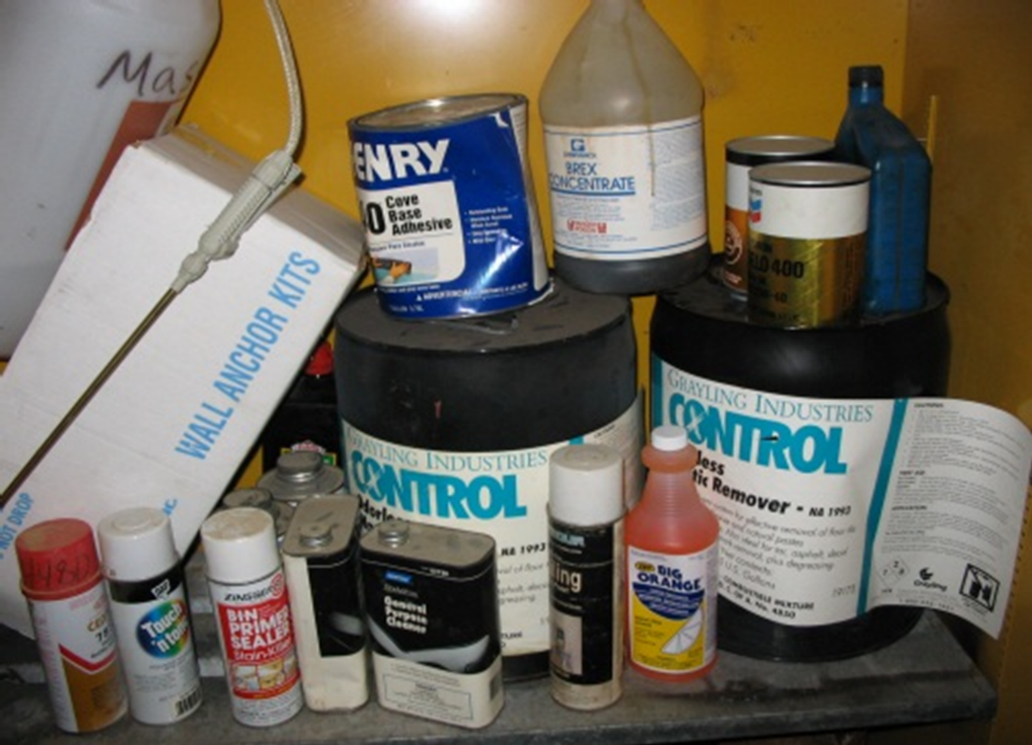 Both the Federal Environmental Protection Agency (EPA) and the Florida Department of Environmental Protection (DEP) have regulations concerning the management of maintenance-related waste materials. The policies presented here on the EH&S website are based on these regulations and will serve as guidance for all of the university’s maintenance and repair shops.
Both the Federal Environmental Protection Agency (EPA) and the Florida Department of Environmental Protection (DEP) have regulations concerning the management of maintenance-related waste materials. The policies presented here on the EH&S website are based on these regulations and will serve as guidance for all of the university’s maintenance and repair shops.
Every shop on campus is subject to unannounced inspections by the EPA and the DEP; non-compliance can result in citations and significant fines. The regulatory requirements covered in these pages will assist shops in identifying their hazardous wastes, properly accumulating hazardous waste in their workplaces, and disposing of these materials through EH&S’ Chemical and Radioactive Waste Disposal group.
New chemical products that shops wish to use should be discussed with EH&S prior to purchase so that EH&S personnel may assist with hazardous waste determinations.
Used Oil Accumulation Requirements
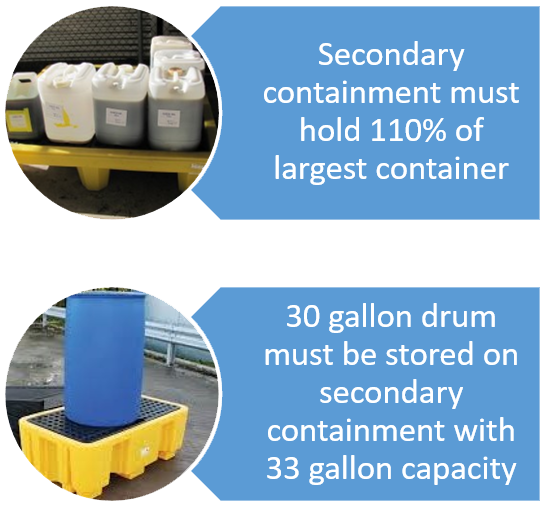
- Used oil, oil filters, and oily wastes must be clearly and appropriately labeled
- All containers must be closed unless you are actively adding oil to them
- Containers must be kept in good condition and not leaking
- All containers need to be protected from the weather and stored on an impermeable surface
- You are required to have adequate secondary containment, which must be able to contain 110% of the volume of the largest container stored in the area
- Containment area must be kept free of spill residue and debris; clean up all spills or leaks promptly
- Do not add anything but Used Oil to your Used Oil containers
Oily Waste Description
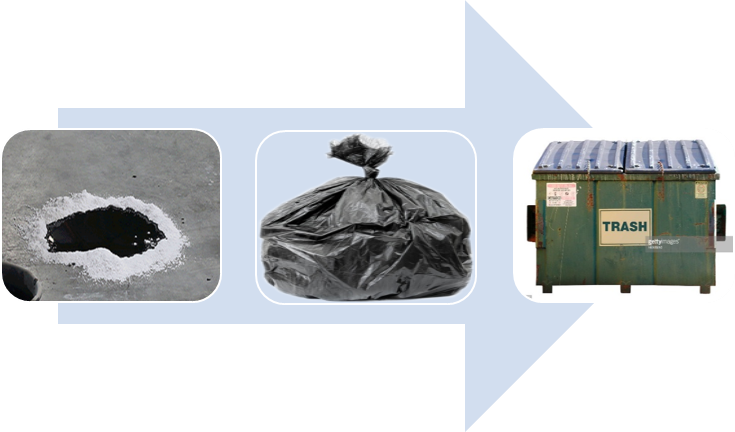 Oily wastes are defined as “those materials which are mixed with used oil and have become separated from that used oil.” This includes absorbent clay “kitty litter” or other absorbent material used in the process of routine maintenance or in cleaning up a spill. Per F.A.C. 62-710 oily wastes may be packaged and disposed of as non-regulated solid waste (regular trash). OILY WASTES MUST NOT CONTAIN FREE LIQUIDS. Free liquids must never be disposed of in regular solid waste.
Oily wastes are defined as “those materials which are mixed with used oil and have become separated from that used oil.” This includes absorbent clay “kitty litter” or other absorbent material used in the process of routine maintenance or in cleaning up a spill. Per F.A.C. 62-710 oily wastes may be packaged and disposed of as non-regulated solid waste (regular trash). OILY WASTES MUST NOT CONTAIN FREE LIQUIDS. Free liquids must never be disposed of in regular solid waste.
Used Oil Filters
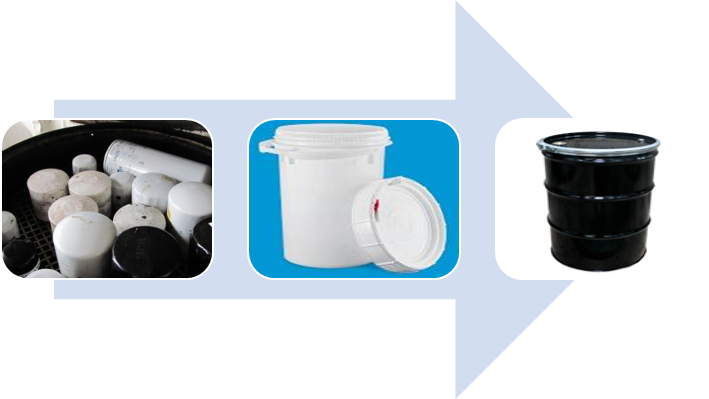
Commercially generated oil filters are banned from landfill disposal. The filters must be processed by a registered used oil filter processor. Used oil filters must be stored in above ground containers which are clearly labeled “Used Oil Filters” and which are in good condition. The storage containers must be protected from weather and stored on an oil impermeable surface. Do not mix fuel or air filters into the oil filter container.
Oil-Filled Equipment, Electrical Devices and Transformers
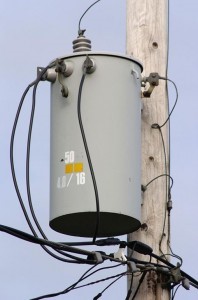 Departments that operate, maintain, remove from service, or dispose of transformers and other oil-filled electrical devices are required to comply with federal and state laws with regard to PCB (Polychlorinated Biphenyl) contamination.
Departments that operate, maintain, remove from service, or dispose of transformers and other oil-filled electrical devices are required to comply with federal and state laws with regard to PCB (Polychlorinated Biphenyl) contamination.
These departments must have records for all electrical equipment indicating whether each is PCB-containing or non-PCB-containing. If this status is unknown, a determination shall be made using either a PCB-contamination level determination, or the date of manufacture (devices manufactured after July 2, 1979 may be assumed to be non-PCB-containing). When any oil-filled equipment or electrical device is removed from service and records for that device do not exist, then the oil in that device must be sampled for PCB’s. The results of this test must be known before the oil is removed from the device. The device may not be disposed of until the results of this test are known, as well.
 PCB-containing devices must be labeled with the date removed from service; departments have 30 days to dispose of the devices once they are removed from service.
PCB-containing devices must be labeled with the date removed from service; departments have 30 days to dispose of the devices once they are removed from service.
Oil spilled from transformers or oil-filled electrical devices must be assumed to be PCB-containing unless it is known otherwise.
Disposal of oil-filled devices and oils will depend on the concentration of PCB’s. Contact EH&S for specific guidance.
Rechargeable Batteries
- Includes all types of rechargeable batteries (of any size), car batteries, batteries removed from Uninterrupted Power Supplies (“UPSs”), batteries containing toxic heavy metals such as lead or cadmium, Nickel Metal Hydride batteries, and Lithium Ion batteries
- Does not include alkaline batteries, which may be disposed of as normal trash
- Place batteries in a rigid outer container such as a box or bucket
- Label as “Universal Waste-Batteries”
- Write accumulation start date on label; recycle through EH&S within one year

Mercury-Containing Lamps
- Includes all types of fluorescent bulbs (including compacts), high-intensity bulbs (“HIDs”), Mercury lamps, UV bulbs, projector bulbs, and U-tube or circular bulbs
- Does not include incandescent bulbs, which may be disposed of as normal trash
- Place bulbs/lamps in a rigid outer container such as a box or bucket
- Label as “Universal Waste-Mercury Containing Lamps”
- Write accumulation start date on label; recycle through EH&S within one year

Mercury-Containing Devices
- Includes mercury-containing thermometers, thermostats, manometers, sphygmomanometers, mercury switches, and mercury tube control devices
- Place device in a rigid outer container such as a box or bucket
- Contain broken devices in a sealable plastic bag within the rigid outer container to prevent Mercury spillage
- Label as “Universal Waste- Mercury Containing Devices”
- Place device in a rigid outer container such as a box or bucket
- Write accumulation start date on label; recycle through EH&S within one year

Smoke Detectors
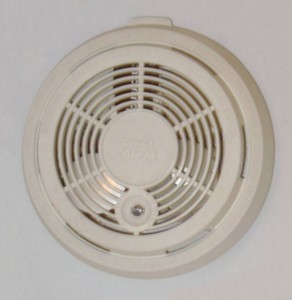 Many smoke detectors contain radioactive materials. A label on the back or side of the detector will alert you to the presence of a radiation source. It is necessary to dispose of radioactive detectors through EH&S’s Chemical and Radioactive Waste Disposal group. The detectors must be intact for disposal.
Many smoke detectors contain radioactive materials. A label on the back or side of the detector will alert you to the presence of a radiation source. It is necessary to dispose of radioactive detectors through EH&S’s Chemical and Radioactive Waste Disposal group. The detectors must be intact for disposal.
Some smoke detectors may be exempt from these disposal requirements; contact EH&S at (352) 392-8400 to determine if your smoke detectors are exempted or regulated prior to disposal.
Whenever possible, maintenance activities are encouraged to install smoke detectors which do not contain radioactive sources. The disposal costs associated with radioactive sources will often outweigh a less-expensive initial cost.
Smoke detectors should be delivered to Building 831 in the Surge Area on Monday, Wednesday, or Friday from 8-9am. Shops are required to provide a written inventory to EH&S which details the number, make, model, and activity of each type of detector being disposed of.
Resources
Gas Cylinders
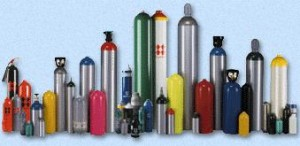 Prior to ordering pressurized gas cylinders for their research projects, Principal Investigators and lab members are directed to contact the manufacturer or cylinder supplier and make arrangements to have the cylinders picked up following use.
Prior to ordering pressurized gas cylinders for their research projects, Principal Investigators and lab members are directed to contact the manufacturer or cylinder supplier and make arrangements to have the cylinders picked up following use.
In the event that a lab discovers an old or abandoned cylinder in their spaces, they should contact EH&S’s Chemical and Radioactive Waste Disposal group immediately to aid with disposal.
Aerosol Cans
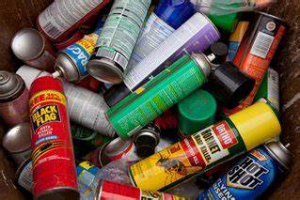 Aerosol cans which are empty of all contents are allowed to be disposed of as “regular” trash by placing in any waste receptacle. If there are contents still in the can, however, the aerosol product should be placed in an appropriate outer container (such as a fiberboard drum) in the lab’s Hazardous Waste Satellite Accumulation Area and disposed of through EH&S.
Aerosol cans which are empty of all contents are allowed to be disposed of as “regular” trash by placing in any waste receptacle. If there are contents still in the can, however, the aerosol product should be placed in an appropriate outer container (such as a fiberboard drum) in the lab’s Hazardous Waste Satellite Accumulation Area and disposed of through EH&S.
Latex Paint
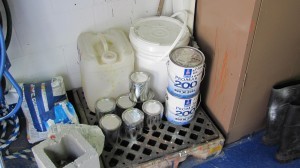 Latex-based paints are not hazardous waste; however, liquid latex paint may not be disposed of in solid waste containers (i.e. dumpsters or trash cans) or in storm drains. Old latex-based paints may be consolidated into larger containers for disposal cost savings. Small quantities remaining in cans may be air dried before disposal.
Latex-based paints are not hazardous waste; however, liquid latex paint may not be disposed of in solid waste containers (i.e. dumpsters or trash cans) or in storm drains. Old latex-based paints may be consolidated into larger containers for disposal cost savings. Small quantities remaining in cans may be air dried before disposal.
If the paint in the can is completely dry, it may be disposed of in the trash.
Dried rags and paintbrushes that are contaminated with latex-based paints only may also be disposed of in the trash.
The rinsate water from the cleaning of rags and brushes contaminated with latex paints must be disposed of in a drain that goes directly to the wastewater treatment plant- no latex paint rinsate may go to the storm water drains or to the ground.
Oil-Based or Solvent-Based Paint
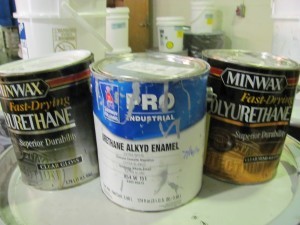 Solvent-based (or “oil based”) paints, enamels, varnishes, sealants, etc. meet the definition of hazardous waste and unused portions must be disposed of by EH&S. Waste mixtures of solvent based paint and paint thinners/solvent must be collected in a closed container, labeled as hazardous waste.
Solvent-based (or “oil based”) paints, enamels, varnishes, sealants, etc. meet the definition of hazardous waste and unused portions must be disposed of by EH&S. Waste mixtures of solvent based paint and paint thinners/solvent must be collected in a closed container, labeled as hazardous waste.
Paint cans that once contained oil-based paints must meet the EPA’s definition of empty before they can be placed in the trash. This is achieved by scraping the container to ensure that all pourable materials have been removed. The pourable material must be collected for disposal by EH&S.
Containers and drums can be obtained by calling EH&S at (352) 392-8400. Brushes and rags that have been contaminated with hazardous waste (non-latex paints, cleaners, thinners, strippers, etc.) and/or waste solvents cannot be placed in the trash, and must be disposed of as hazardous waste through EH&S.
All waste from parts washers should be managed and labelled as hazardous waste.
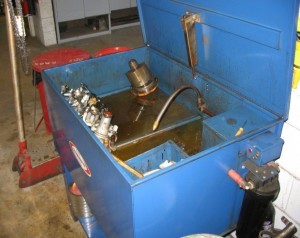 Recycling parts washers use a variety of solvents to clean small parts. The fluid is typically recycled internally and re-used until it is no longer viable. This fluid will likely become contaminated with regulated metals and solvents. Parts washer waste includes the following:
Recycling parts washers use a variety of solvents to clean small parts. The fluid is typically recycled internally and re-used until it is no longer viable. This fluid will likely become contaminated with regulated metals and solvents. Parts washer waste includes the following:
- The waste liquid solvent used to clean parts
- The sludge accumulated in the sludge filter
- The filter itself when it is changed out
Parts washer fluid and sludge should be collected separately from filters. All wastes should be collected in an appropriately labeled container and stored in an area with secondary containment protected from the weather.
- Keep parts washers closed and secured when not in use.
- Do not mix parts washing wastes with used oil, as this will make the oil non-recyclable.
- Collect all rags used in degreasing as a hazardous waste and dispose of them through EH&S.
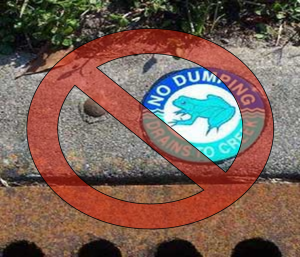
Under its NPDES Phase II Municipal Separate Storm Sewer System (MS4) permit, the University of Florida is required to protect storm water by informing businesses operating on campus of the hazards associated with illicit discharges and improper disposal of waste. Illicit discharges to UF’s storm sewer system are carried to Lake Alice and other local waterbodies where they will adversely impact water quality and the aquatic environment.
General Guidelines
Illicit discharges are prohibited under the UF Policy to Prohibit Illicit Storm Water Discharge. Any discharge of materials or waste other than rainwater to the University of Florida storm sewer system is considered an illicit discharge. Illicit discharges may occur intentionally or by failure to prevent discharge or release of materials used or generated on campus by the business or its employees.
Common materials prohibited from entering the storm water system include but are not limited to the following:
- Hazardous Materials/Waste
- Paint or paint washings or waste
- Food Service/Cooking Oil Waste
- Vehicle/equipment/building wash effluent
- Leaks/discharges from vehicles/equipment
Reporting Spills to the Storm Water System
Upon discovery, any illicit discharge to the UF storm sewer system must be reported immediately to UF Environmental Health and Safety (352)392-8400 during normal work hours or to University Police Department (352)392-1111 after normal work hours.
